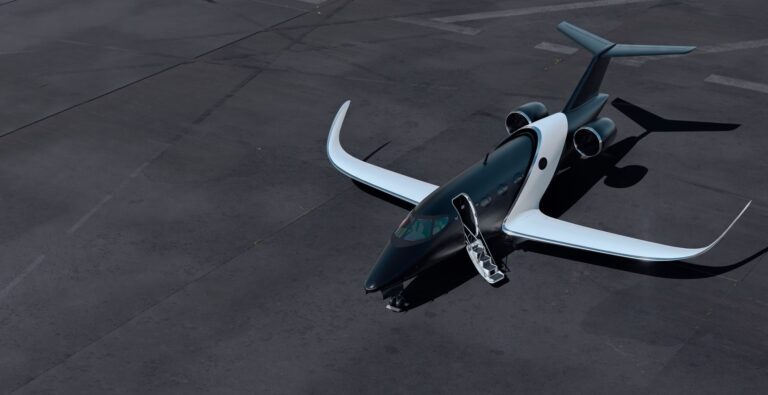Soon, passengers could well be flying in planes powered by hydrogen. Among the companies working to make this possible is French startup Beyond Aero. Its business jet will be one of the world’s first electric aircraft designed for hydrogen propulsion. Capable of carrying up to eight people over 1,500 kilometers, the plane’s hydrogen powertrain is expected to unlock a range that is seven times greater than what’s currently possible with lithium-ion batteries alone.
The hydrogen-electric powertrain is already proven. Earlier this year, Beyond Aero successfully flew its proof-of-concept plane, Blériot, completing 10 take-offs including two full flights. Equipped with an 85-kilowatt hydrogen-electric powertrain prototype developed by the company, the engine generated two-thirds of its power from a hydrogen fuel cell and the remaining third from batteries.
“The weight of batteries remains a barrier, so we looked for other ways to generate electricity and the one that makes sense for aviation is hydrogen,” said Jacques-Alexis Verrecchia, head of product at Beyond Aero. “One promises to be cleaner, more cost effective to run and much quieter compared to traditional business aircraft.”
Before Beyond Aero built its hybrid prototype powertrain, it created the entire system virtually in the 3DEXPERIENCE platform on the cloud. This virtual twin will follow the aircraft throughout its entire product development cycle, from design and testing to certification and manufacturing. It will allow Beyond Aero to keep track of all part designs and modifications, and validate subsystem integration before building the physical aircraft, helping to expedite its go-to-market strategy.
Being able to test everything virtually is also important for getting the aircraft’s architecture right. Even though One will look like a conventional business jet, it’s being designed so that it can accommodate the hydrogen tanks, fuel cells and thermal management system in the best possible way without impacting drag – helping to improve aerodynamic efficiency by up to 30% compared to a retrofitted aircraft. Being able to unify design and simulation on a single data model – referred to in the industry as a MODSIM approach – allows Beyond Aero to iterate and validate new designs of the aircraft fast. With MODSIM, engineers can, for example, draw a 2D diagram of a tank or pipe, connect it to the 3D model, test how it fits and functions, and then any design changes automatically update in the simulation.
Following the successful test flight of its prototype, Beyond Aero is now moving fast to get One manufactured, certified and launched to market. The company also has plans in the works to launch other types of hydrogen propulsion aircraft, including a commuter jet and potentially even larger commercial planes – where the carbon emissions challenge really lies.
“As we develop One, we’re building the knowledge required to create a larger hydrogen powered aircraft,” Verrecchia said. “Our focus is on scaling the architecture and capturing all our know-how within the 3DEXPERIENCE platform, which also serves as a reference for the certification process.”
Read the full story here to find out more about One and how Beyond Aero is bringing it to market using the 3DEXPERIENCE platform on the cloud.

